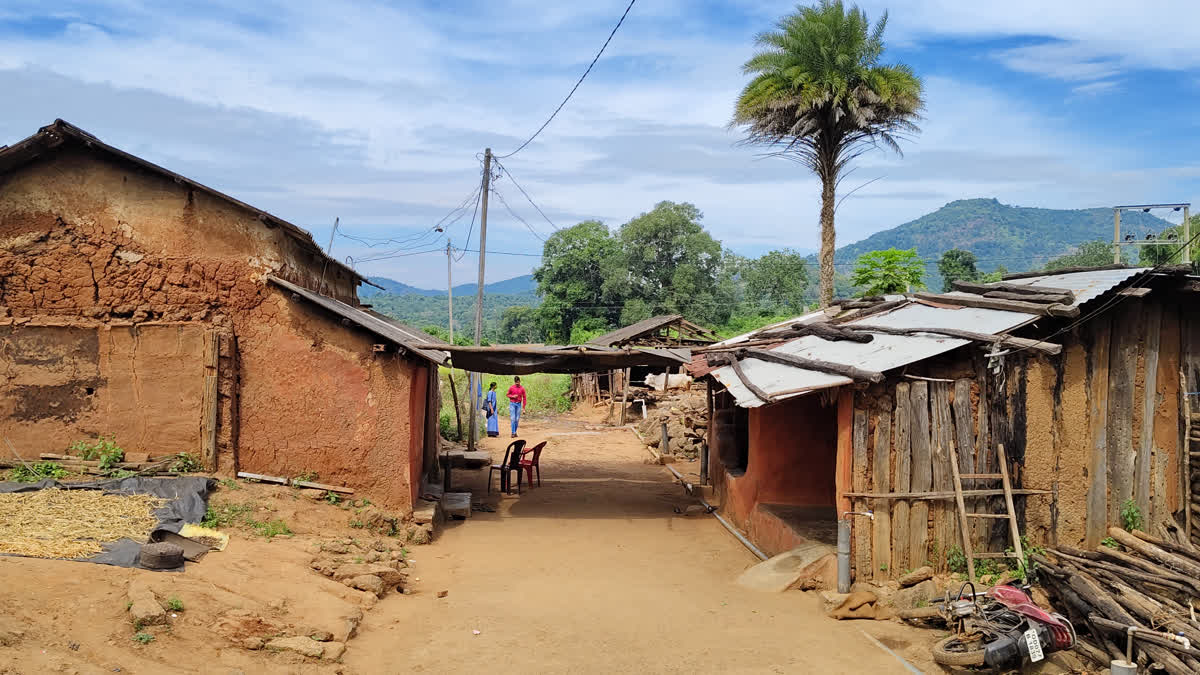Mandipanka (Kandhamal) : It was the early hours of November 19. Stepping into the soil of Mandipanka gave jitters. For, the village was unusually calm, disturbing in more ways than one. Not one person on the streets, seemed interested to broker a conversation with me, neither were they excited about the presence of hordes of outsiders (inquiry team members and journalists besides government officials) loitering around the village all of a sudden. Exactly 20 days into the mango kernel deaths, Mandipanka has gone silent. And its people, lost, in the thoughts of uncertainty.
Eighteen days ago, on the fateful wee hours of November 1, long before the sun rose, news of eight women falling severely ill in Mandipanka spread like wildfire across Kandhamal district. Within hours, the tragic deaths of three women from consuming mango kernel gruel became the grim reality.
For over two decades, Odisha has grappled with food insecurity, but never before had Mandipanka faced such an overwhelming loss. Today, 20 days after the tragedy, the village mourns in stunned silence, struggling to come to terms with its new reality.
The families of the deceased—once united in joy and celebration—are now bound by grief. “We used to sit together, eat together, laugh together. Now, the place feels cursed,” says Tarana Pattamajhi, a teary-eyed relative. The same mango kernels that sustained the community during hard times have now become the harbinger of death.
The ill-fated mango kernel, carefully stored for three years, was prepared out of necessity. For many tribal families, the kernels are a fallback food during lean seasons. Washed, dried, and painstakingly ground, they were consumed as porridge, often with rice, to stave off hunger. But on that fateful day, the stored kernels turned toxic, leading to severe poisoning.
The tragedy has left many unanswered questions. Could these deaths have been avoided with better awareness or food safety measures? Or was it the inevitable outcome of persistent food insecurity and a reliance on traditional survival practices?
Mandipanka no longer echoes with the laughter of its women. The spot where they once gathered to prepare food and share stories now feels eerily quiet. Grief has cast its shadow over every home.
An innocent child wanders aimlessly, too young to understand that his mother will never return. A husband stares blankly at the spot where he last saw his wife, lost in memories of better days. The entire village seems frozen in time, caught between mourning and fear.
“My wife took care of everything—our children, the fields, our meals. Now, we don’t know how to carry on,” says Jodadar Patra, a grieving husband.
Beyond the individual stories of loss, the tragedy in Mandipanka raises critical questions for tribal communities across Odisha. With rice as their staple, mango kernel dishes like mango kernel gruel have long been a traditional supplement during food shortages. But is this practice safe anymore?
“Changing our diet isn’t easy,” says a village elder Pravati Pattamajhi. “We depend on the forest and what it provides. But after this incident, how can we trust our food?”
Government intervention is now crucial. Immediate aid has been provided to the affected families, but the larger issues of food security and tribal welfare remain unresolved. Will these communities receive the support they need to adopt safer food practices? Or will they be left to grapple with the same risks in the future?
As the sun sets over Mandipanka, the village remains cloaked in sorrow. The loss of three women has left a void that may take years to heal. But the tragedy also serves as a grim reminder of the challenges faced by Odisha’s tribal communities—where survival often comes at a steep cost.
Chief Minister Mohan Charan Majhi had ordered an RDC-level inquiry into the tragedy instructing the distribution of three months’ worth of rice to the affected areas as a temporary relief measure. However, opposition leaders, particularly from the BJD and Congress, have criticized the government’s delayed response, pointing out that neither the Chief Minister nor any cabinet ministers have visited the area to assess the situation firsthand.
For now, Mandipanka waits—for answers, for justice, and for the hope that such a tragedy will never strike again.
Read More



